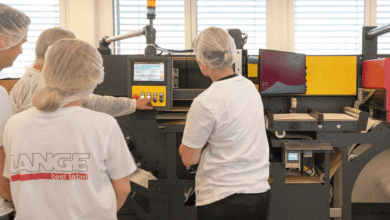Smile Engineering: The Precision and Versatility of Composite Bonding

Introduction to Composite Bonding
In the realm of modern cosmetic dentistry, the art and science of smile enhancement has evolved dramatically. Among the most innovative and sought-after treatments, composite bonding London practitioners have pioneered techniques that combine aesthetic excellence with minimally invasive approaches.
Understanding Composite Bonding
Composite bonding represents a sophisticated blend of dental artistry and advanced materials science. This versatile treatment involves the application of tooth-coloured resin material to enhance the appearance of teeth, offering solutions for various dental imperfections. Modern composite bonding techniques have revolutionised cosmetic dentistry, providing patients with natural-looking results that can transform their smiles.
The Science Behind the Materials
The composite materials used in dental bonding have undergone significant development over the years. These advanced resins comprise a mixture of plastic and glass particles that create a durable, aesthetically pleasing result. The materials can be precisely colour-matched to existing teeth, ensuring seamless integration with the natural dentition.
Applications and Benefits
Composite bonding offers remarkable versatility in addressing various dental concerns. Recent clinical studies have demonstrated the effectiveness of composite bonding in treating multiple aesthetic issues, making it a preferred choice for both practitioners and patients.
Common Treatment Applications
- Closing gaps between teeth
- Repairing chipped or cracked teeth
- Improving the appearance of discoloured teeth
- Altering tooth shape and size
- Protecting exposed root surfaces
The Treatment Process
The procedure typically begins with thorough preparation of the tooth surface. This crucial step ensures optimal bonding strength and longevity of the restoration. Practitioners in composite bonding London practices utilise advanced techniques to carefully layer the composite material, sculpting it to achieve the desired shape and appearance. The process requires exceptional attention to detail and artistic skill to create natural-looking results that enhance the patient’s smile while maintaining proper function.
Advanced Techniques and Considerations
Modern composite bonding techniques require a delicate balance of artistic vision and technical precision. Contemporary approaches to composite layering and finishing have significantly improved the longevity and aesthetic outcomes of these restorations, making them an increasingly popular choice for smile enhancement.
Customisation and Planning
Each composite bonding treatment is uniquely tailored to the individual patient’s needs. Factors such as facial features, existing tooth structure, and desired outcomes are carefully considered during the planning phase. This personalised approach ensures that the final results complement the patient’s natural features while meeting their aesthetic goals.
Maintenance and Longevity
To maintain the appearance and durability of composite bonding treatments, proper care is essential. Patients should follow specific maintenance guidelines to ensure their restorations remain in optimal condition:
- Regular dental check-ups and professional cleanings
- Careful attention to oral hygiene practices
- Avoiding excessive consumption of staining substances
- Protection during sports or high-risk activities
Future Developments
The field of composite bonding continues to evolve, with ongoing research into improved materials and techniques. These developments focus on enhancing durability, aesthetics, and the overall patient experience. As technology advances, practitioners specialising in composite bonding London practices remain at the forefront of implementing these innovations.
Conclusion
Composite bonding represents a significant advancement in cosmetic dentistry, offering patients a conservative yet effective solution for smile enhancement. The combination of artistic skill, technical precision, and advanced materials has established this treatment as a cornerstone of modern aesthetic dentistry. As techniques and materials continue to evolve, composite bonding remains an excellent choice for patients seeking to improve their smiles without invasive procedures.
The success of composite bonding treatments lies in the careful balance of scientific understanding, technical expertise, and artistic vision. When performed by skilled practitioners, these restorations can provide remarkable improvements to dental aesthetics while preserving natural tooth structure. This conservative approach to smile enhancement continues to make composite bonding an increasingly popular choice among patients seeking cosmetic dental improvements.



